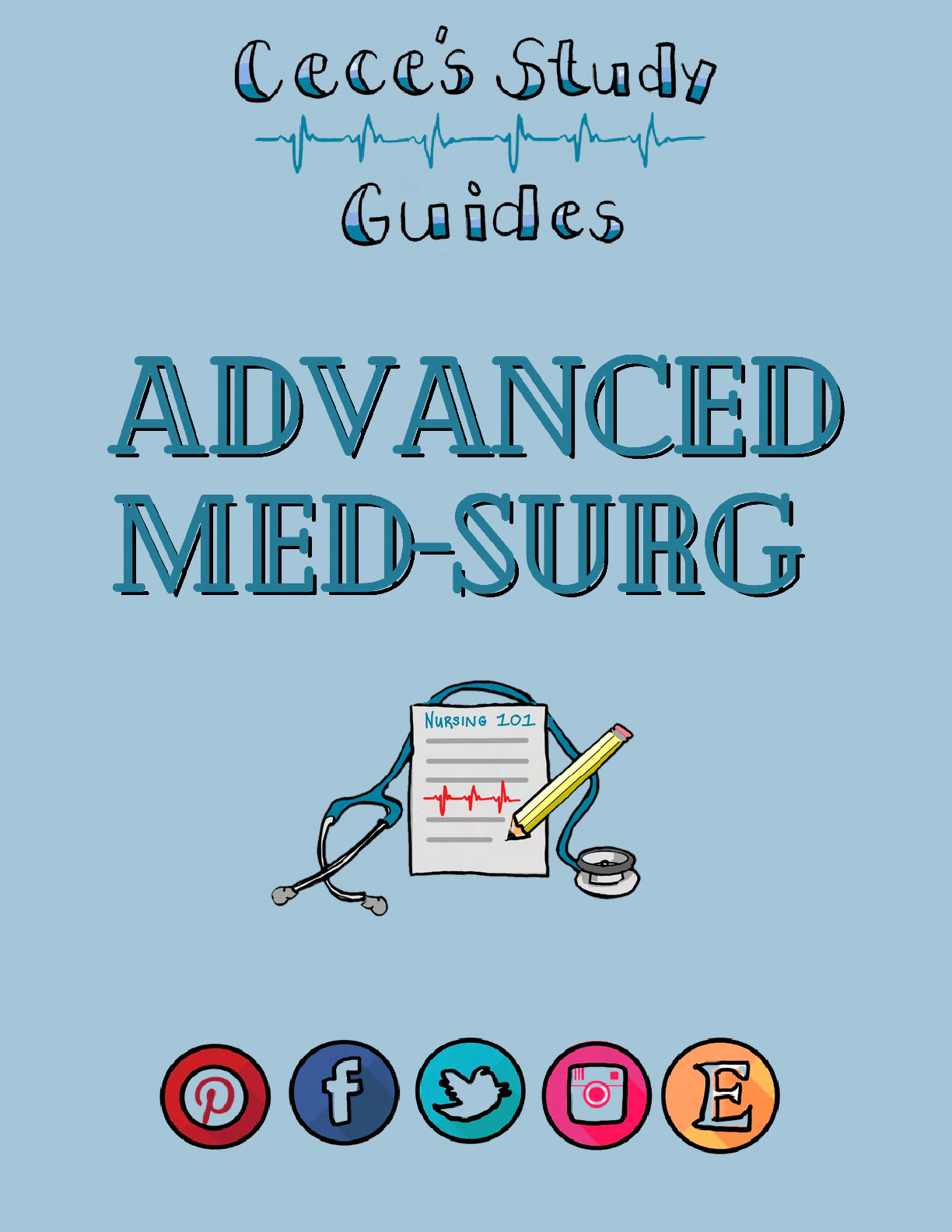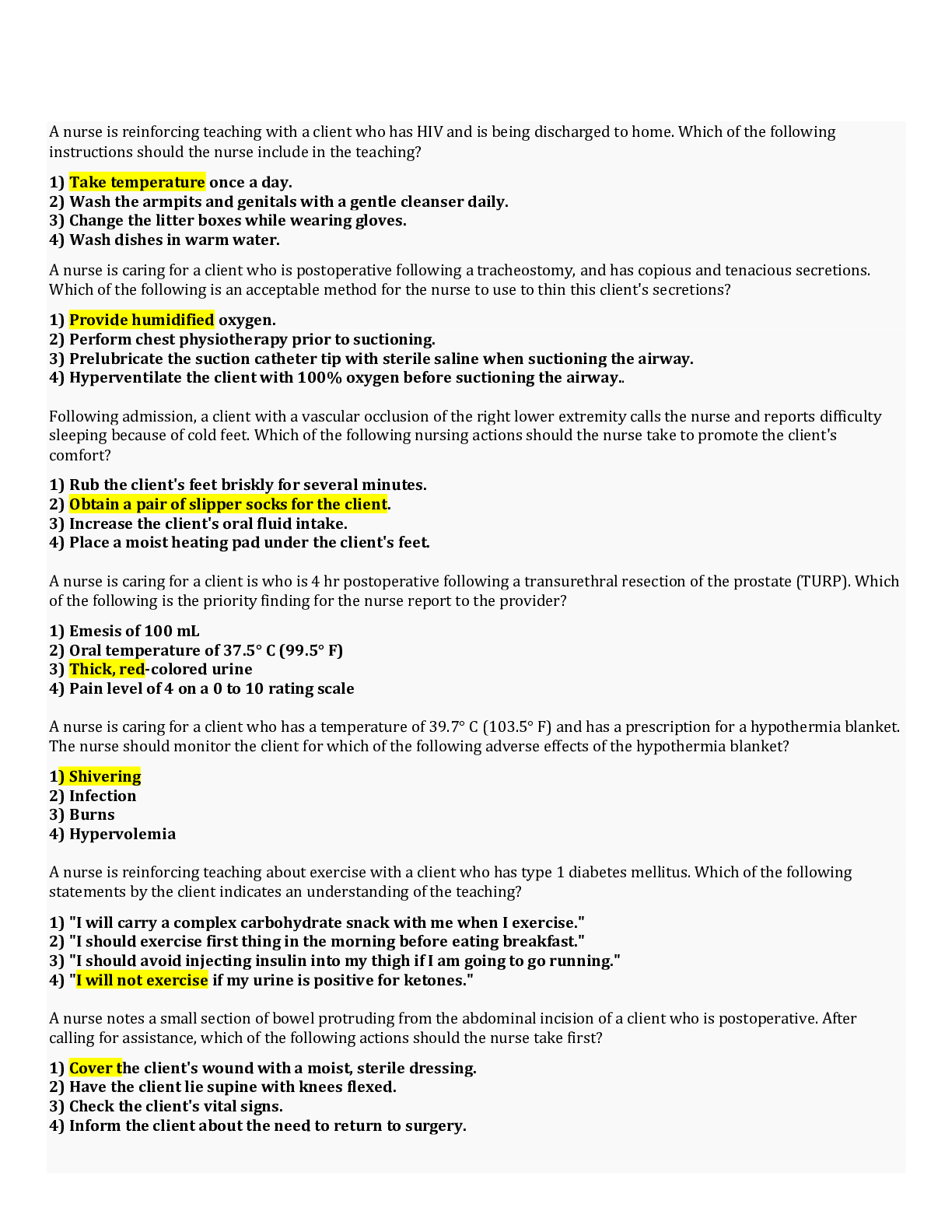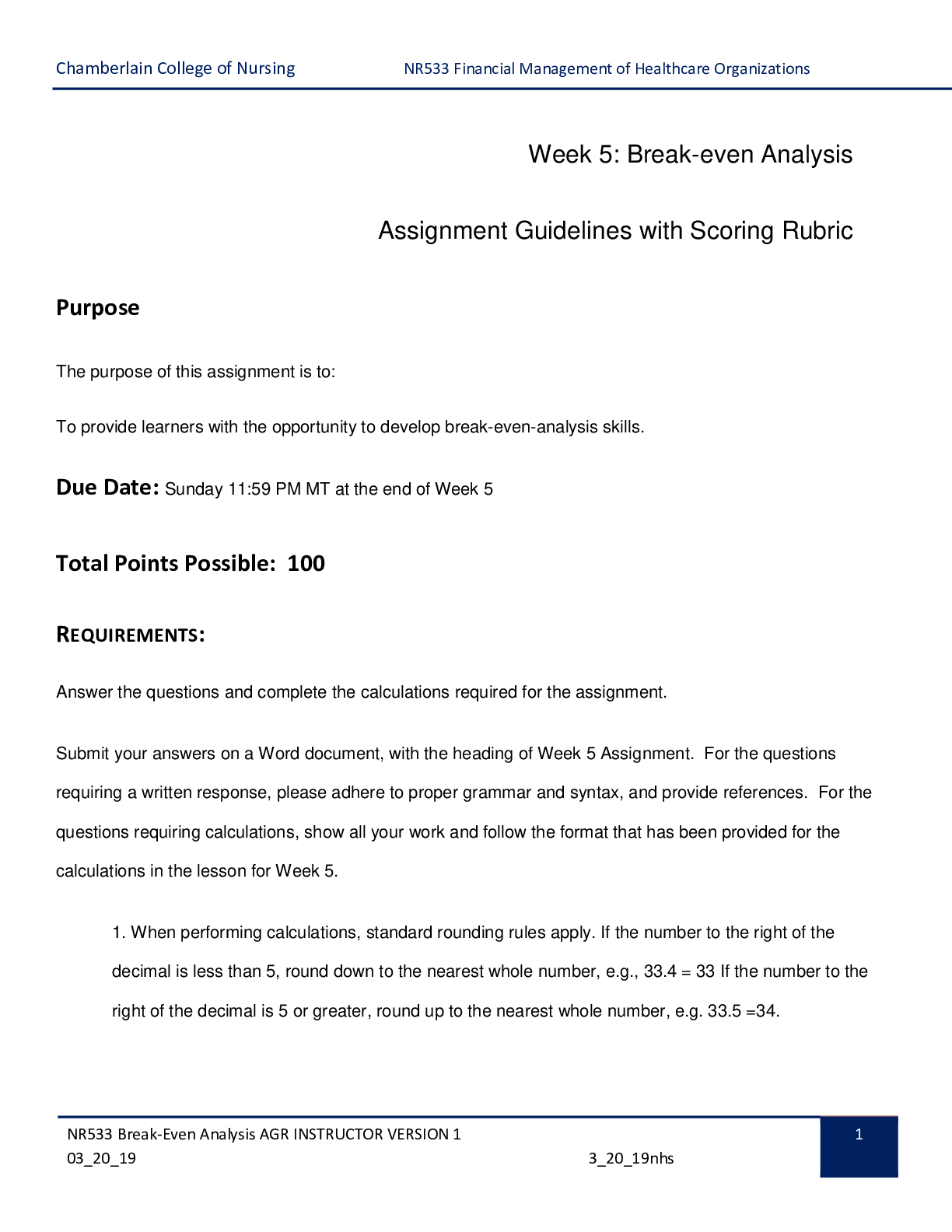*NURSING > STUDY GUIDE > Fundamentals_of_Nursing_FINAL_study_guide. Well organised for the quick read. (All)
Fundamentals_of_Nursing_FINAL_study_guide. Well organised for the quick read.
Document Content and Description Below
1022C Fundamentals of Nursing: Final Exam Study Guide 1. THE NURSING PROCESS: Apply each of the 5 steps to a question Assessing ● Collect Data ● Organize data ● Validate data ● Document ... data Diagnosing ● Analyze date ● Identify health problems, risks and strengths ● Formulate diagnostic statements Planning ● Prioritize problems / diagnosis ● Formulate goals / desired outcomes ● Select nursing interventions ● Write nursing interventions Implementing (action) ● Reassess the client ● Determine the nurse’s need for assistance ● Implement the nursing interventions ● Supervise delegated care ● Document nursing activities Evaluating ● Collect data related to outcomes ● Compare data with outcomes ● Relate nursing actions to client goals / outcomes ● Draw conclusions about problem status ● Continue, modify or terminate the client’s care plan 2. NURSING DIAGNOSIS FORMATION: May have to develop a nursing diagnosis Data analysis + Problem Identification = Formulation of Nursing Diagnosis 3. THERAPEUTIC COMMUNICATION (DO NOT NEED TO KNOW SPECIFIC NAMES OF TECHNIQUES) See table 26-2 4. VITAL SIGNS: Know ranges- BP, Pulse, Temperature (Axillary, PO), Respirations, Pulse OxTEMP: 96.8-99.5 F (Oral, rectal, axillary, tympanic membrane-ear, skin/temporal artery-forehead) BP: 120/80 PULSE: 60-100 WNL: Temporal, carotid (never do both at once), Brachial, radial, apical, femoral, popliteal, posterior tibia, dorsalis pedis) RESPIRATIONS: 12-20 PULSE OXIMETRY: 95-100% RA 5. CLIENT HISTORY: Past Medications, Past Surgeries, Etc. ● Surgical History ● Medical History ● Social History ● Family History ● Allergies ● Medications 6. PHYSICAL ASSESSMENT: Genital Urinary (Inspection); Lungs (Auscultating), GI = Observation, Auscultating, Palpation, Percussion ● Inspection: Visual examination using sight ● Auscultation: the process of listening to sounds produced within the body. ● Direct auscultation: the used of the unaided ear, for example listening to a respiratory wheeze or the grating of a moving joint. ● Indirect auscultation: the use of a stethoscope ● Percussion: the act of striking the body surface to elicit sounds that can be heard or vibrations that can be felt ● Direct percussion: striking the area to be percussed directly with the pads of 2, 3 or 4 fingers or with the pad of the middle finger ● Indirect percussion: the striking of an object held against the body area to be examined ● Palpation: Examination of the body using the sense of touch. Used to determine: texture, temperature, vibration, position, size, consistency and mobility of organs, distention, pulsation and tenderness or pain. Skin – Inspection and palpation Ears and hearing – inspection and palpation Nose – inspection and palpation Lungs and thorax – inspection, palpation, percussion and auscultation Heart – Inspection, palpation and auscultation (in this sequence)Abdomen- inspection, auscultation, percussion and palpation (this order) 7. OBJECTIVE AND SUBJECTIVE DATA: Subjective: What the client see’s; Objective: What the nurse see’s OBJECTIVE: data that is detectable by an observer or can be tested against an accepted standard; can be seen, heard, felt or smelled SUBJECTIVE: data that is apparent only to the person affected; can be described or verified only by that person 8. PRIORITIZATION OF CARE: Look at examples of client’s with medical problems and be able to prioritize; Respiration 1st than pain 9. DELEGATION OF CARE TO THE UAP AND LPN: Know 5 rights of delegation: Look at case study: delegation to LPN and UAP 5 Rights of delegation: ● Right task ● Right circumstance ● Right person ● Right direction and communication ● Right supervision and evaluation Can delegate to UAP: VS, measuring and recording I/O, transfers and ambulation, postmortem care, bathing, feeding, gastrostomy feeding in established systems, safety, weight, performing simple dressing changes, suctioning of chronic tracheostomies, CPR No delegation to UAP: Assessment, interpretation of data, nursing diagnosis, nursing care plan, evaluation of care effectiveness, care of invasive lines, administering parenteral medications, insertion of nasogastric tubes, client education, performing triage, telephone advice, IS Can delegate to LPN: Catheter insertion, medications, IS, Tube feedings, sputum culture, teaching No delegation to LPN: Assessing, Planning, nursing diagnosis 10. PAIN ASSESSMENT: Not able to talk ; Quality, pain scale; sharp, shooting; go back after pain medication is given and re-assess. ● Scale 0-10 (0-None / 10-Worst possible pain) ● Mild Pain – Pain in the 1-3 range ● Moderate Pain – Pain in the 4-6 range ● Severe Pain – Pain in the 7-10 rangePain threshold: least amount of stimuli necessary for a person to label a sensation as pain Pain tolerance: the most pain a person can take 11.CLIENTS AT RISK FOR CONSTIPATION: Immobile, post-op, narcotics ● Not eating enough fiber, such as fruit, vegetables and cereals ● A change in your routine or lifestyle, such as change in eating habits ● Ignoring the urge to pass stools ● Side effects of certain medications ● Not drinking enough fluids ● Post-op 12. OSTOMY CARE: Skin assessment; stoma – red, moist The stoma should appear red and slightly moist. Very pale or darker-colored stomas with a dusky bluish or purplish hue indicate impaired blood circulation to the area, notify Dr. Slight bleeding when stoma is initially touched is normal but report excessive bleeding. New stoma will have swelling but should go down with 2-3 weeks, contact Dr. If it doesn’t, it may indicate blockage. Redness of skin around stoma should be noted. 13. DIFFERENT TYPES OF ENEMAS: Hypertonic; hypotonic; soap suds ● Hypertonic draws water into the colon (Fleet’s enema) ● Hypotonic distends the colon and stimulates peristalsis (tap water) ● Isotonic distends the colon, stimulates peristalsis and softens feces (saline) ● Soapsuds (castile soap) irritates the intestinal mucosa and distends the colon For any type of enema client must lay on left side 14. DIARRHEA: Skin integrity, dehydration, electrolyte imbalance, fecal impaction Causes: ● Stool is unformed and liquidly ● Cramps ● Embarrassing ● Bowel sounds increased ● Skin breakdown ● Dehydration ● Electrolyte imbalance – Rapid movement of Chyme reduces the time available for the large intestines to absorb water and electrolytes 15. FECAL IMPACTION: ● Mass or collection of hardened feces in the folds of the rectum ● Resulted from prolonged retention and accumulatio [Show More]
Last updated: 1 year ago
Preview 1 out of 17 pages
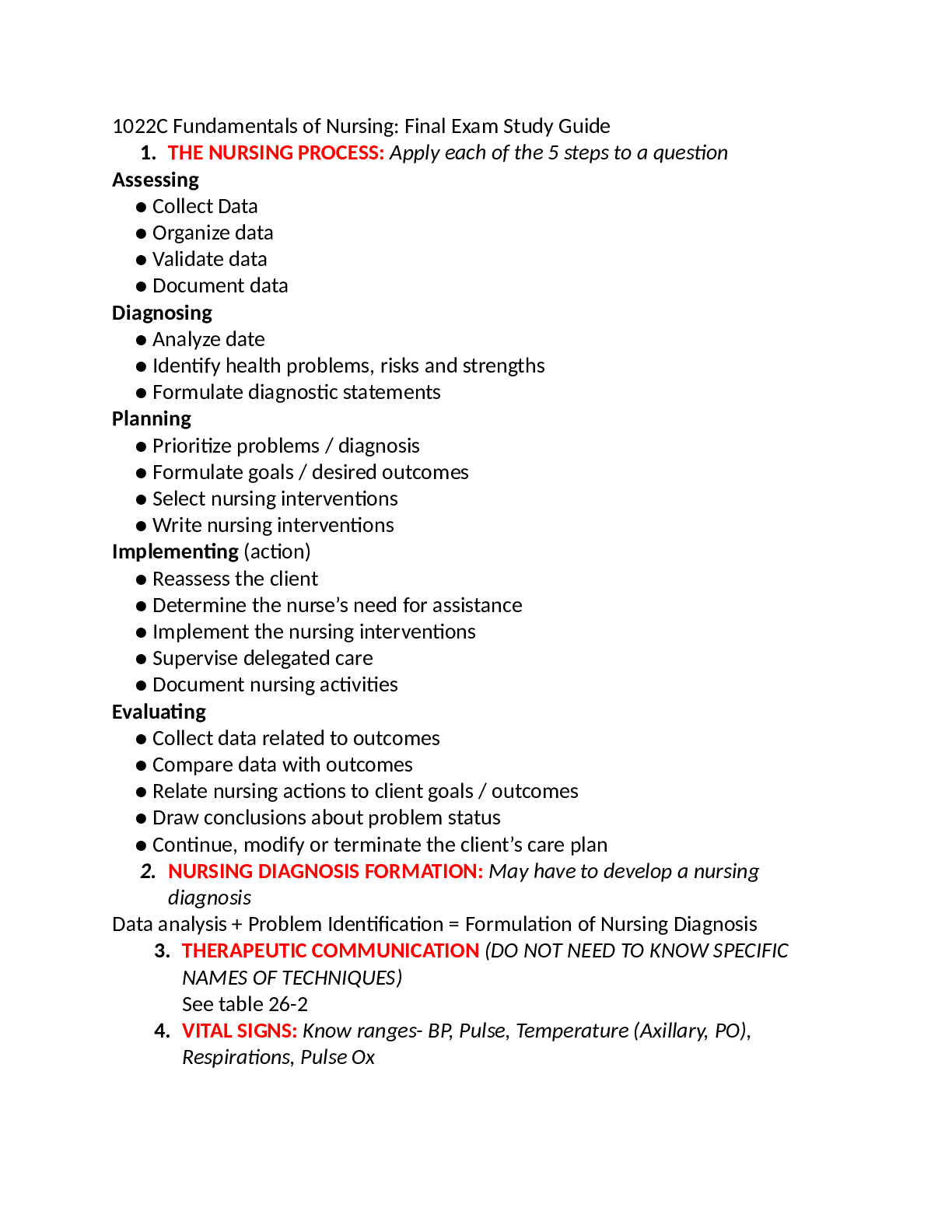
Reviews( 0 )
Document information
Connected school, study & course
About the document
Uploaded On
Apr 09, 2021
Number of pages
17
Written in
Additional information
This document has been written for:
Uploaded
Apr 09, 2021
Downloads
0
Views
34

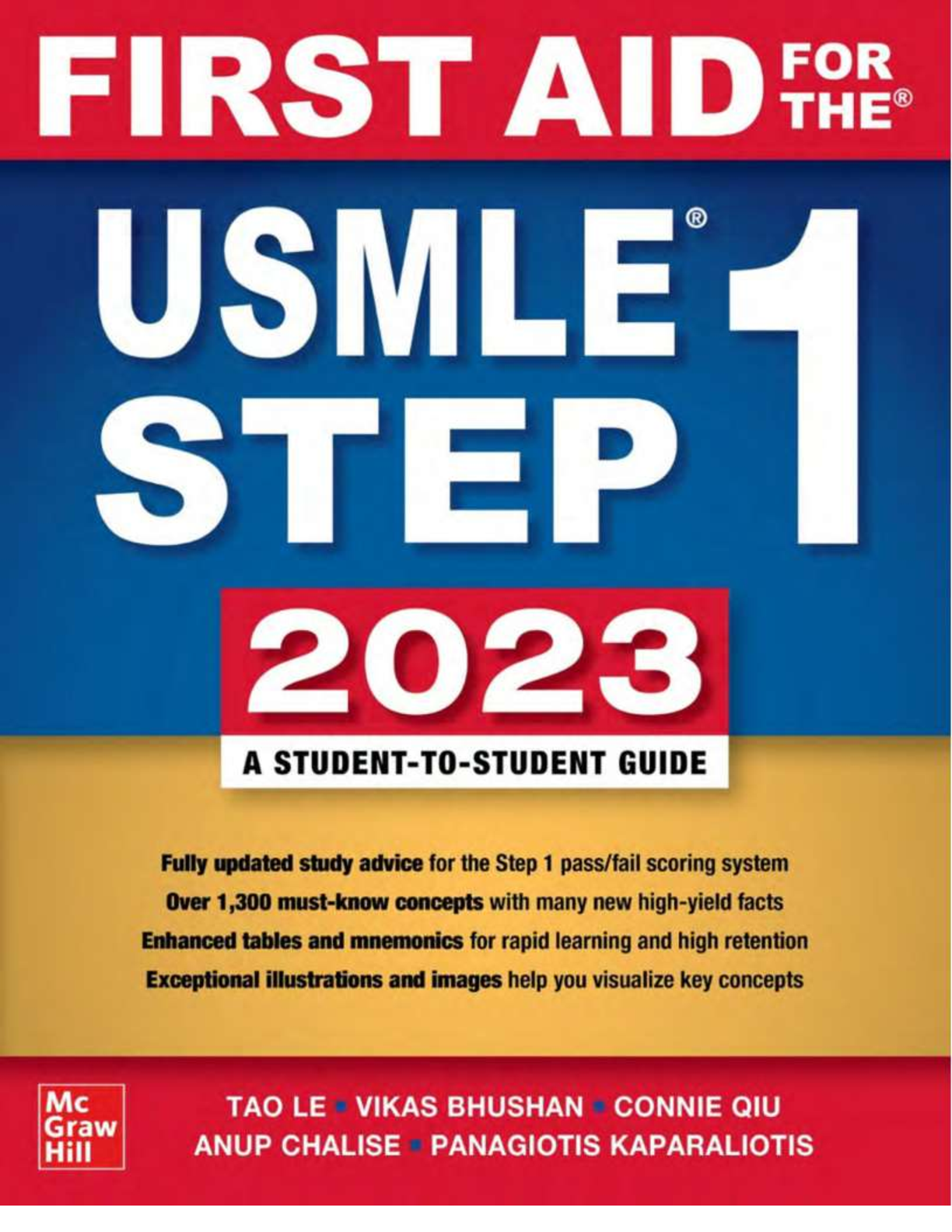
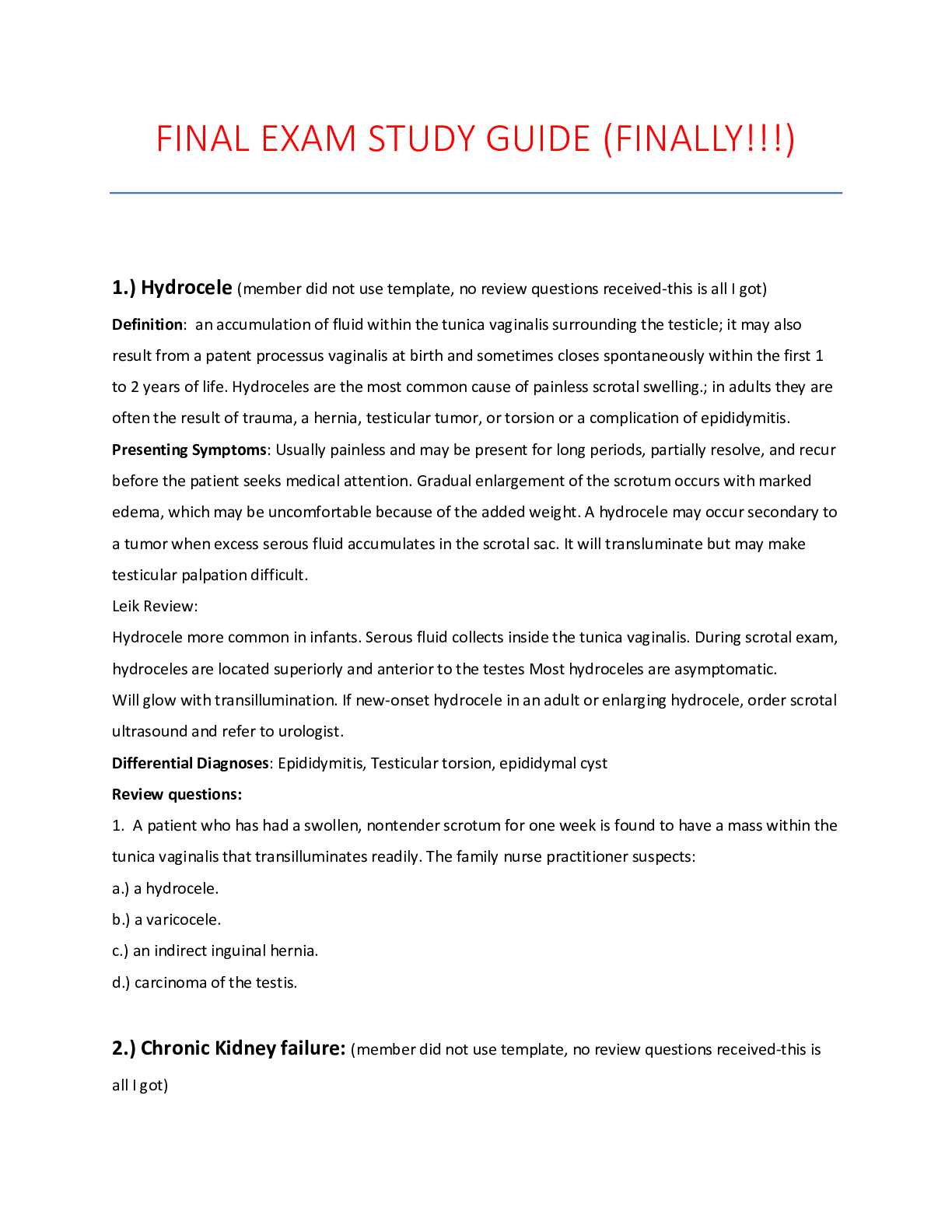
-3-168.png)
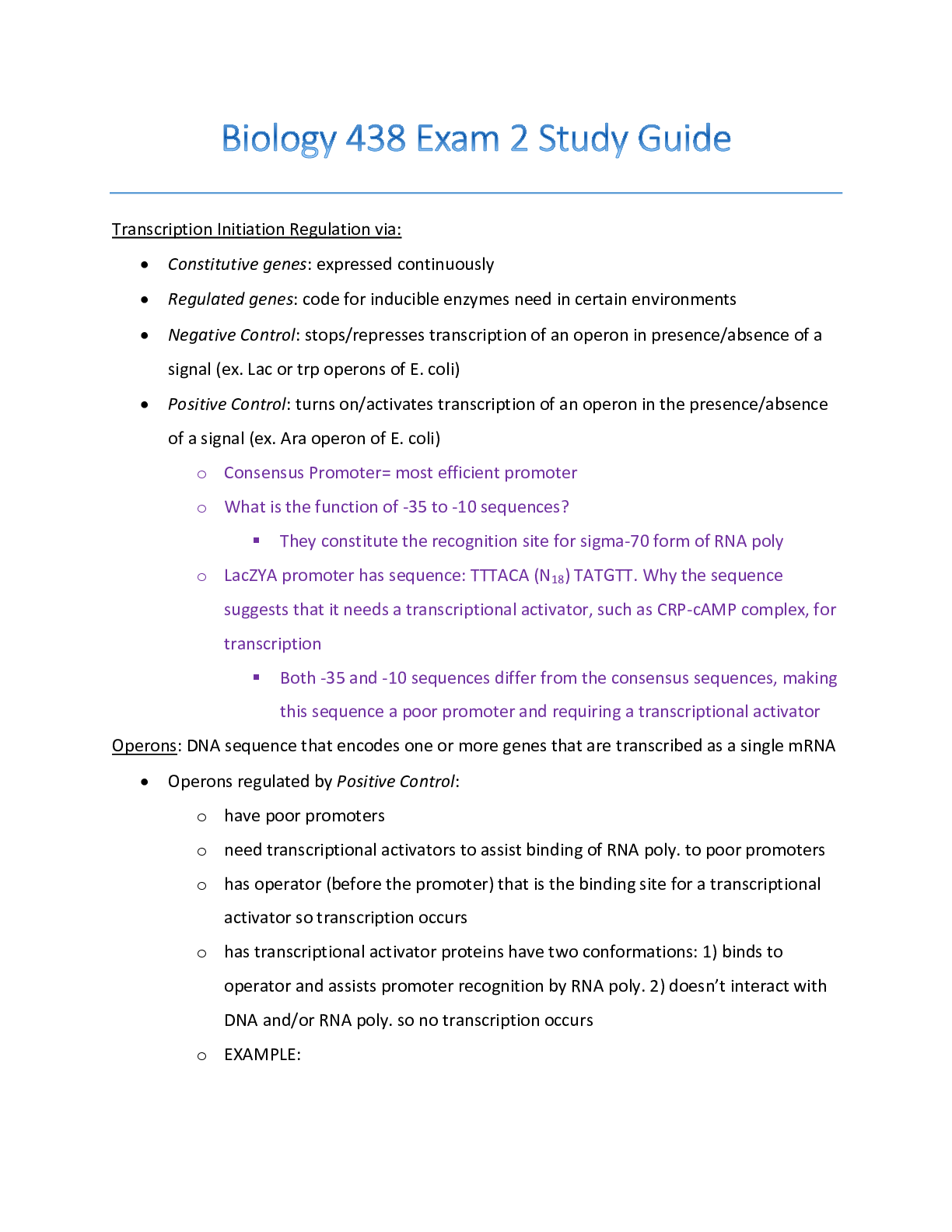
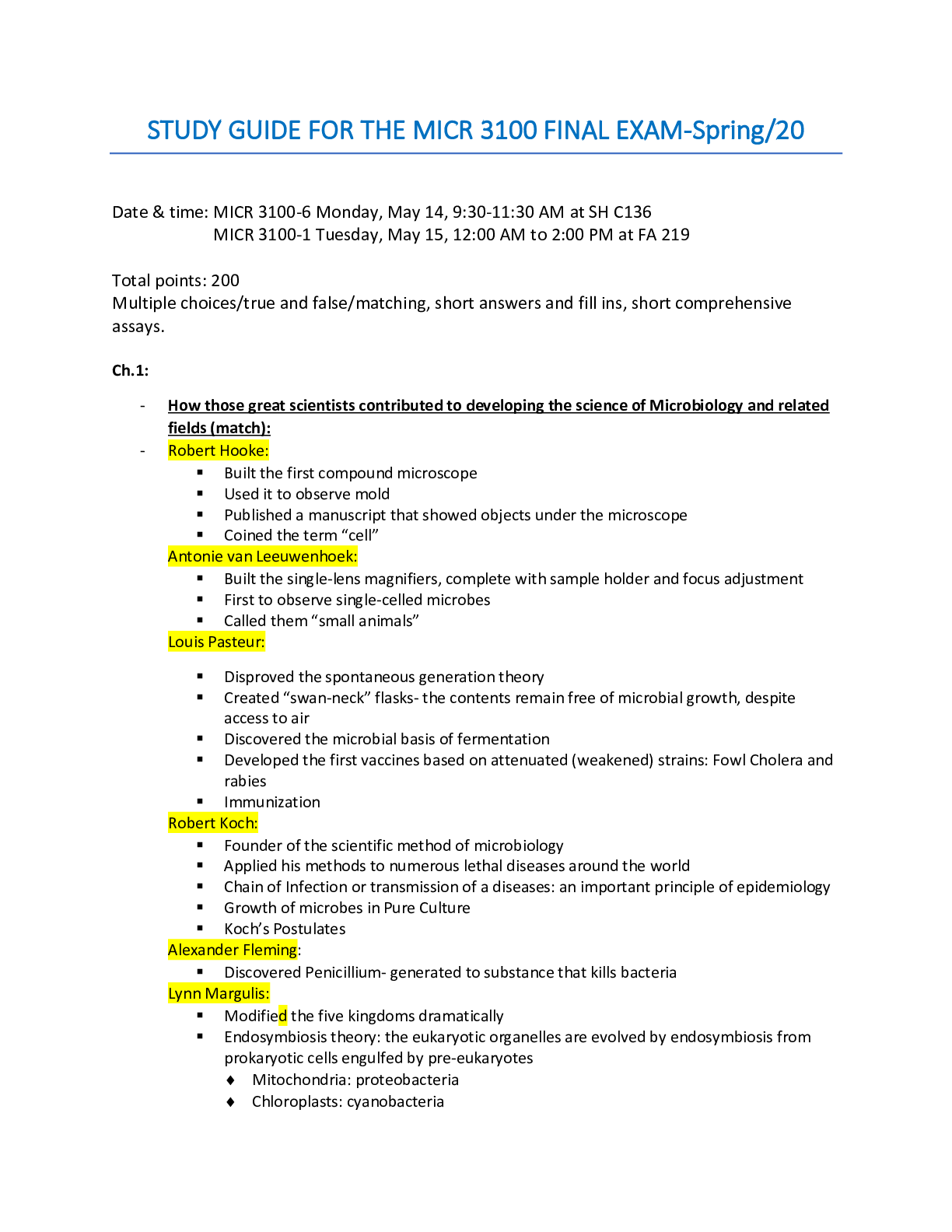
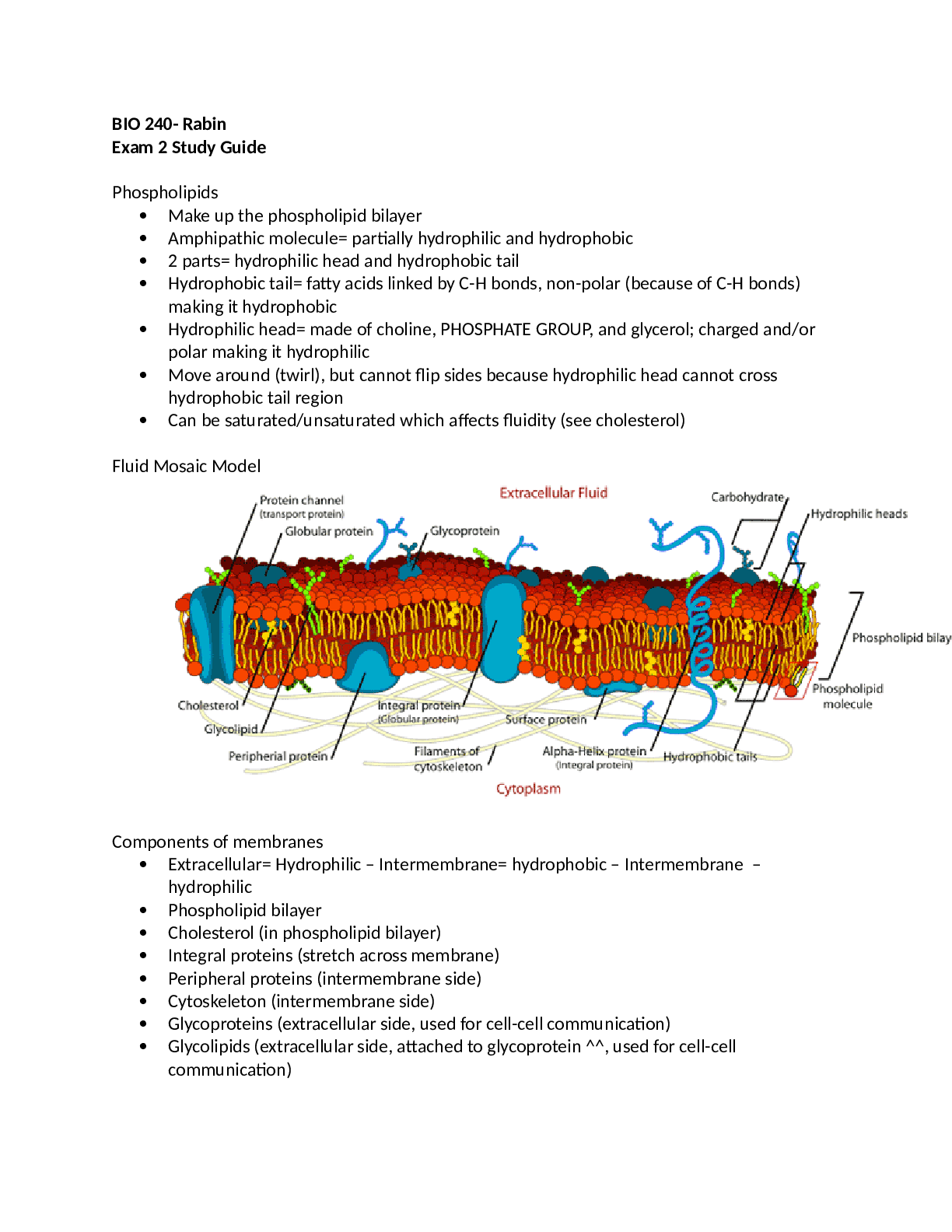


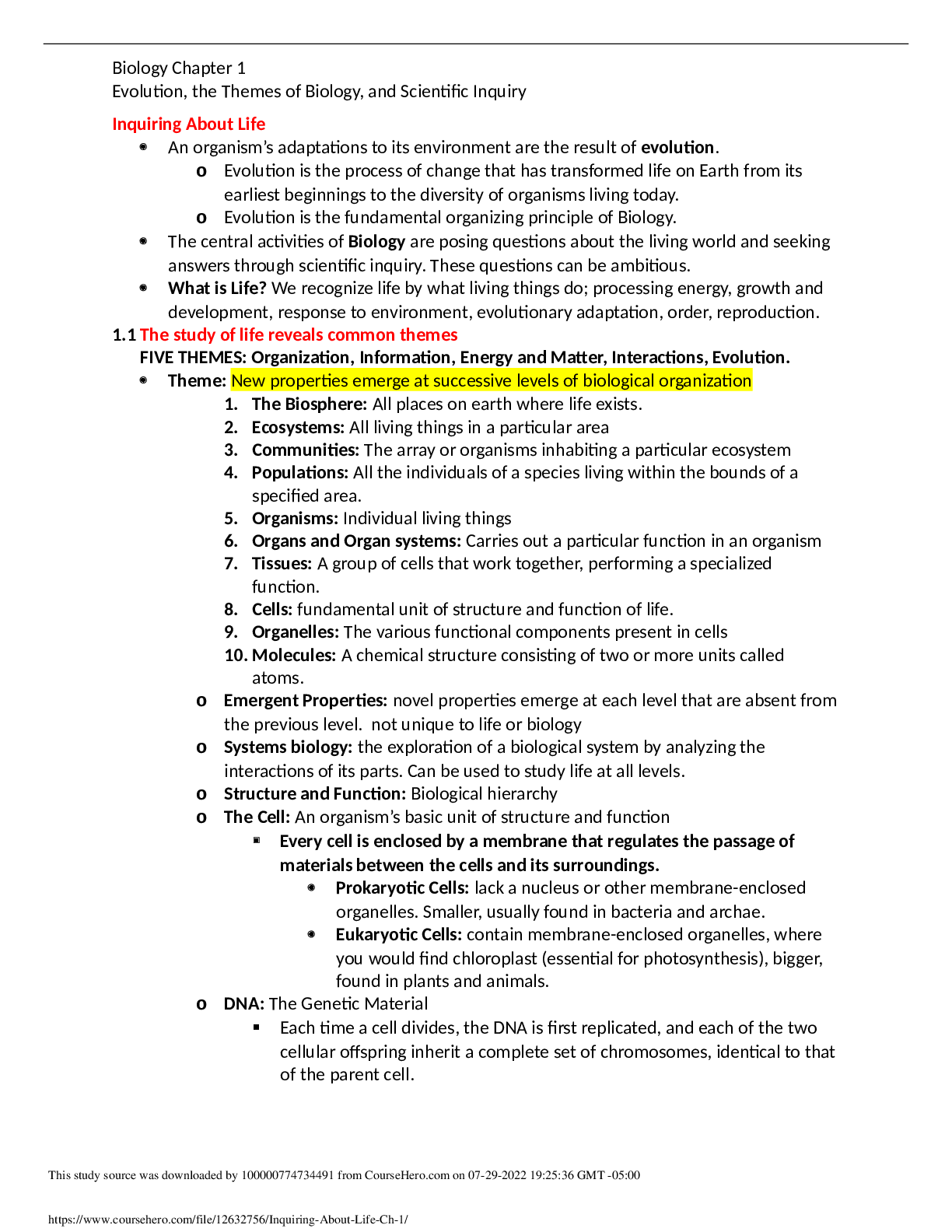
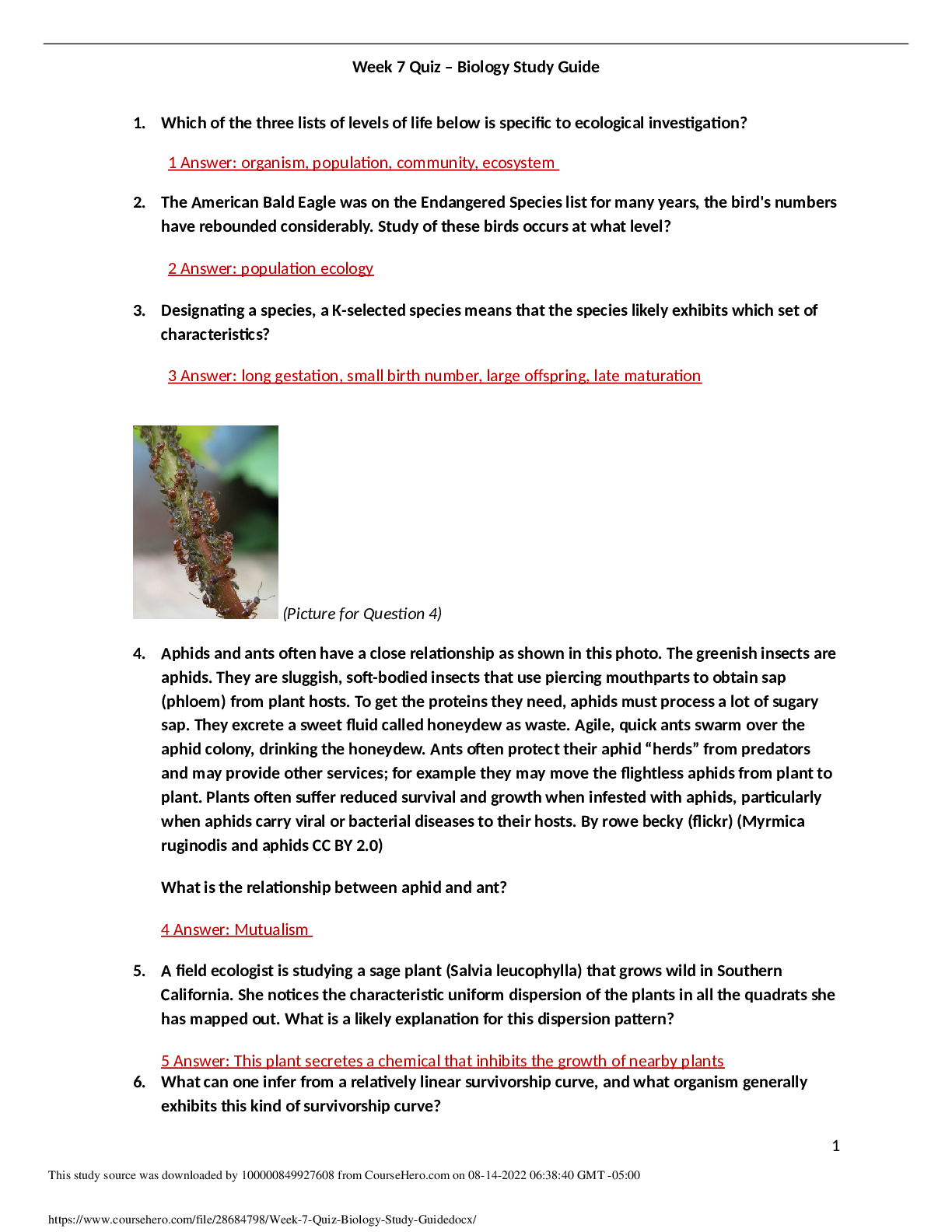


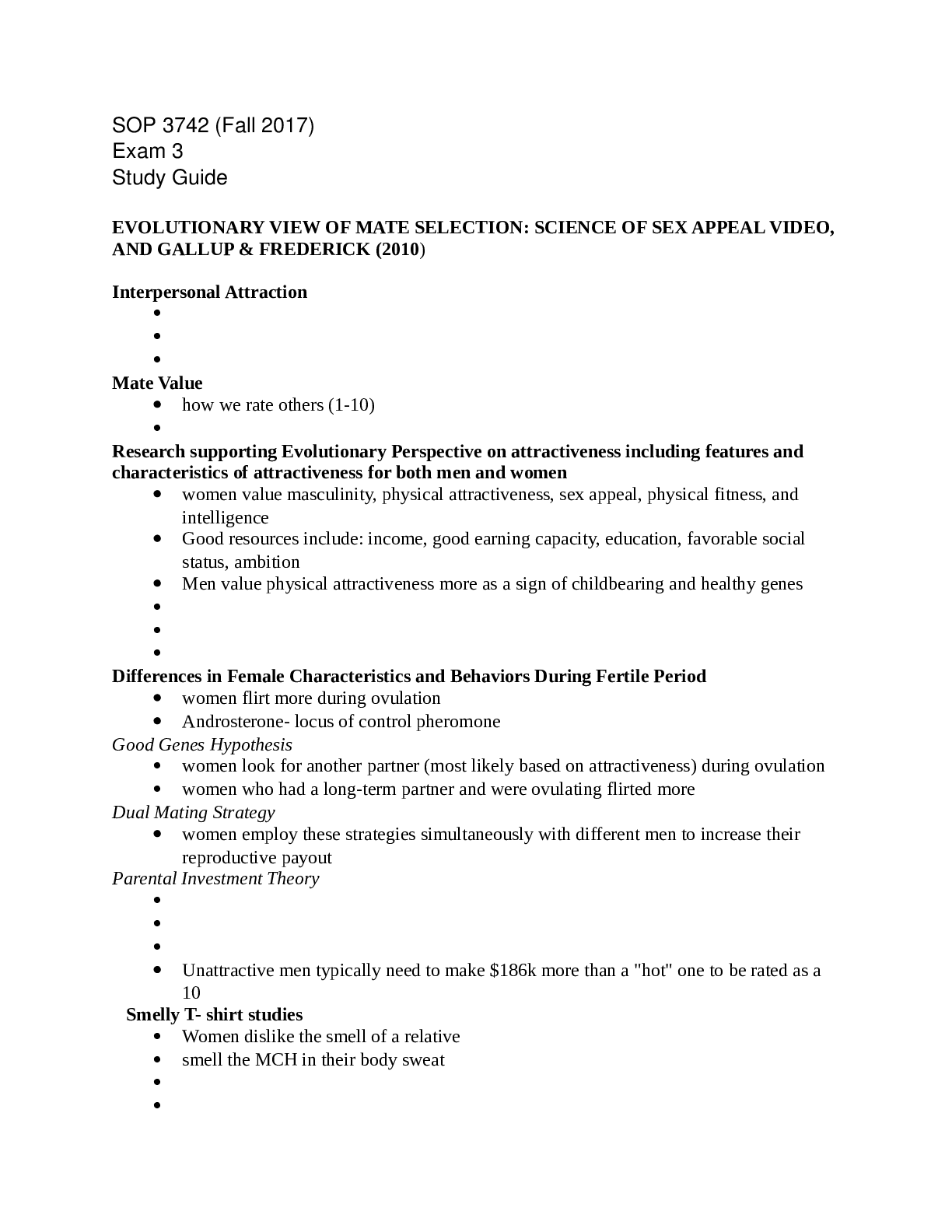
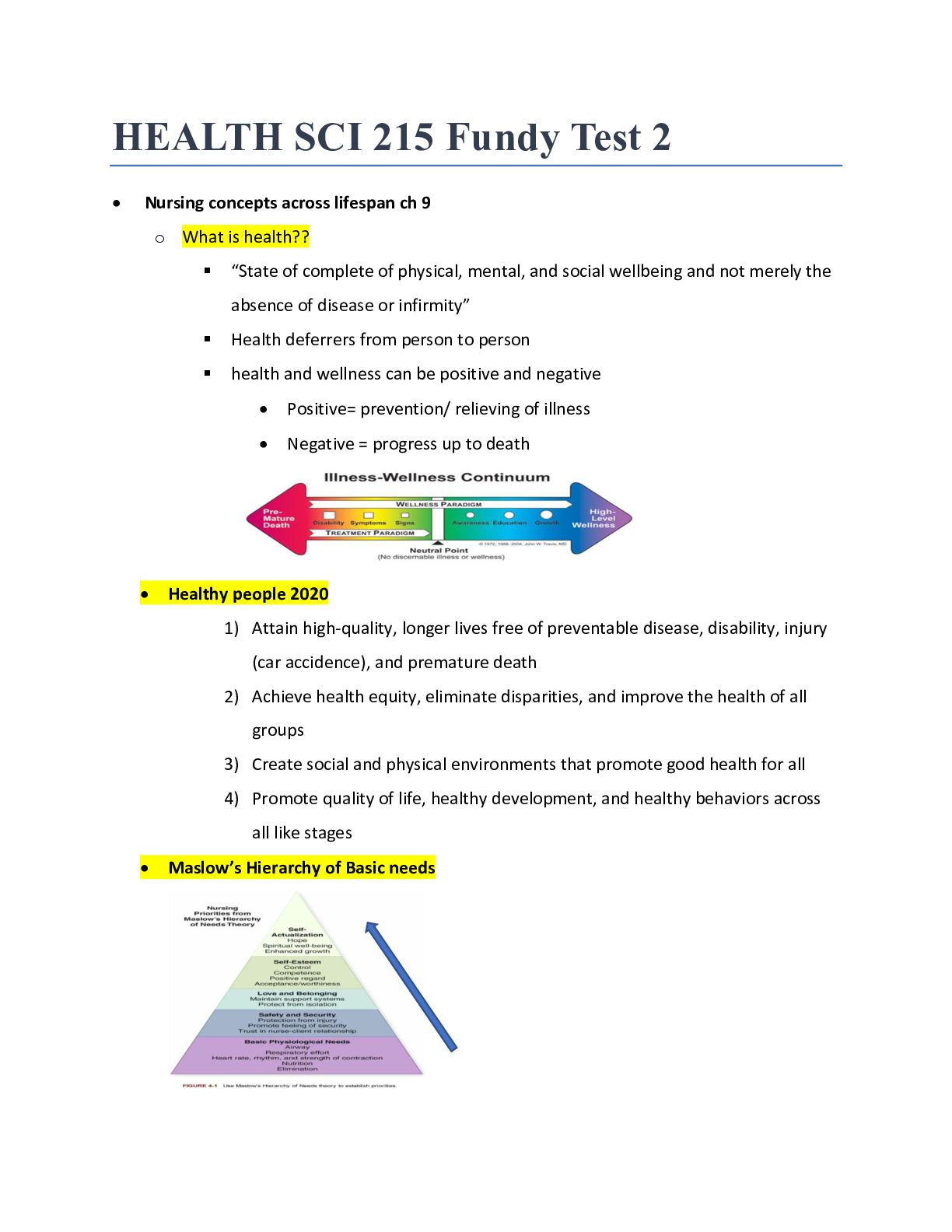






.png)

